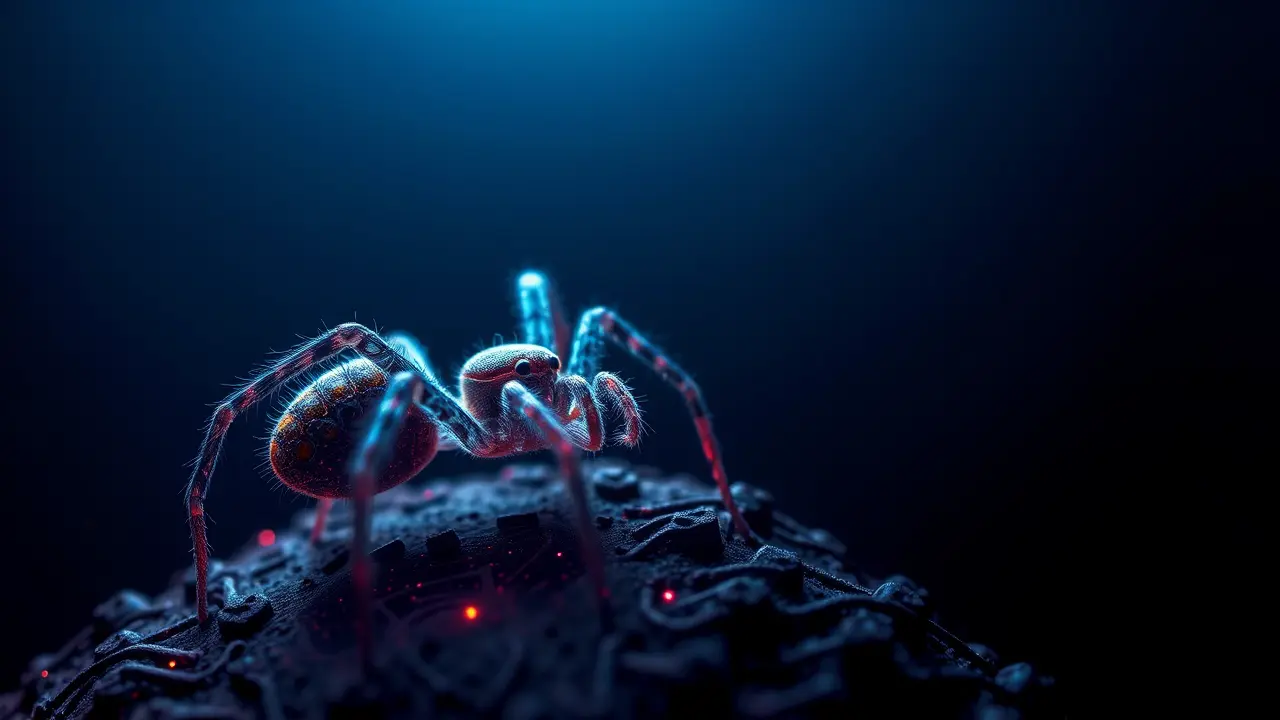
SciencebiologyEvolution and Ecology
Scientists stunned as island spider loses half its genome
KE
Kevin White
14 hours ago7 min read
In a stunning biological upset that fundamentally challenges our understanding of evolutionary genomics, scientists working on the rugged volcanic slopes of the Canary Islands have documented a genetic marvel: the spider species *Dysdera tilosensis* has, in a breathtakingly short evolutionary timescale of just a few million years, jettisoned half of its genome. This discovery, detailed through cutting-edge genomic sequencing technologies, turns the long-held 'island rule' of evolution squarely on its head.Conventional wisdom, built upon decades of observing island fauna from giant Komodo dragons to dwarf elephants, has consistently predicted that species colonizing islands tend to evolve larger body sizes and, intriguingly, larger, more bloated genomes packed with repetitive, non-coding DNA sequences. This genomic inflation was thought to be a side effect of reduced population sizes and the relaxation of selective pressures, allowing so-called 'junk DNA' to accumulate unchecked.But *D. tilosensis* has thrown a massive wrench into this elegant theory.Its genome isn't just slightly smaller; it has undergone a radical, systematic downsizing, a deliberate and precise act of genetic decluttering that has left researchers in awe. The implications are profound.This isn't a case of a genetically impoverished population; paradoxically, this island spider, with its sleek and streamlined DNA, exhibits greater genetic diversity than its continental relatives from which it diverged. This suggests a far more dynamic and aggressive process of natural selection at work, one that actively purges superfluous genetic material to hone a more efficient and adaptable organism.Imagine a software developer not just adding new code, but ruthlessly refactoring and deleting legacy bloatware to make the entire system run faster and more reliably—that's the kind of evolutionary optimization we're witnessing. This finding places *D.tilosensis* at the white-hot intersection of evolutionary biology and advanced genomics, forcing a major reconsideration of how we model genetic change in isolated environments. For researchers like Dr.Elena Vargas, a lead genomicist on the project, the spider represents a new paradigm. 'We've been looking at island evolution through a distorted lens,' she explains via a recent video call from her lab in Tenerife.'We assumed bigger genomes were a passive consequence of isolation. This spider shows us that selection can be incredibly potent, even in small populations, actively favoring genomic minimalism.It's a powerful lesson in evolutionary efficiency. ' The mechanisms behind this dramatic downsizing are now a primary focus.Is it driven by intense competition for resources on the island, placing a premium on rapid development and reproduction, where a leaner genome allows for faster cell division? Or does it relate to the spider's specialized diet of tough-shelled woodlice, requiring a highly specific and optimized set of tool-kit genes, with any extraneous DNA becoming a metabolic burden? The research team is now deploying long-read sequencing platforms to map the spider's DNA architecture with nucleotide-level precision, hoping to identify which specific genomic regions were excised and which were preserved. The potential applications ripple far beyond arachnology.In the burgeoning field of synthetic biology, understanding how nature itself performs such efficient genome minimization could inform efforts to design synthetic organisms or engineer more resilient crops. If we can decode the rules this spider follows, we might one day be able to redesign genomes for stability and efficiency, stripping away the vulnerabilities that come with genetic excess.This single species, clinging to its Atlantic island home, has not just lost a chunk of its DNA; it has gifted science a masterclass in genomic engineering, dictated by the relentless, unforgiving logic of natural selection. It forces us to ask a fundamental question: in the game of evolution, is less sometimes truly more? For *Dysdera tilosensis*, the answer, written in its elegantly精简的 genetic code, appears to be a resounding yes.
#featured
#genome downsizing
#island evolution
#spider genetics
#evolutionary biology
#genetic diversity
#Canary Islands
Stay Informed. Act Smarter.
Get weekly highlights, major headlines, and expert insights — then put your knowledge to work in our live prediction markets.
Related News
© 2025 Outpoll Service LTD. All rights reserved.
